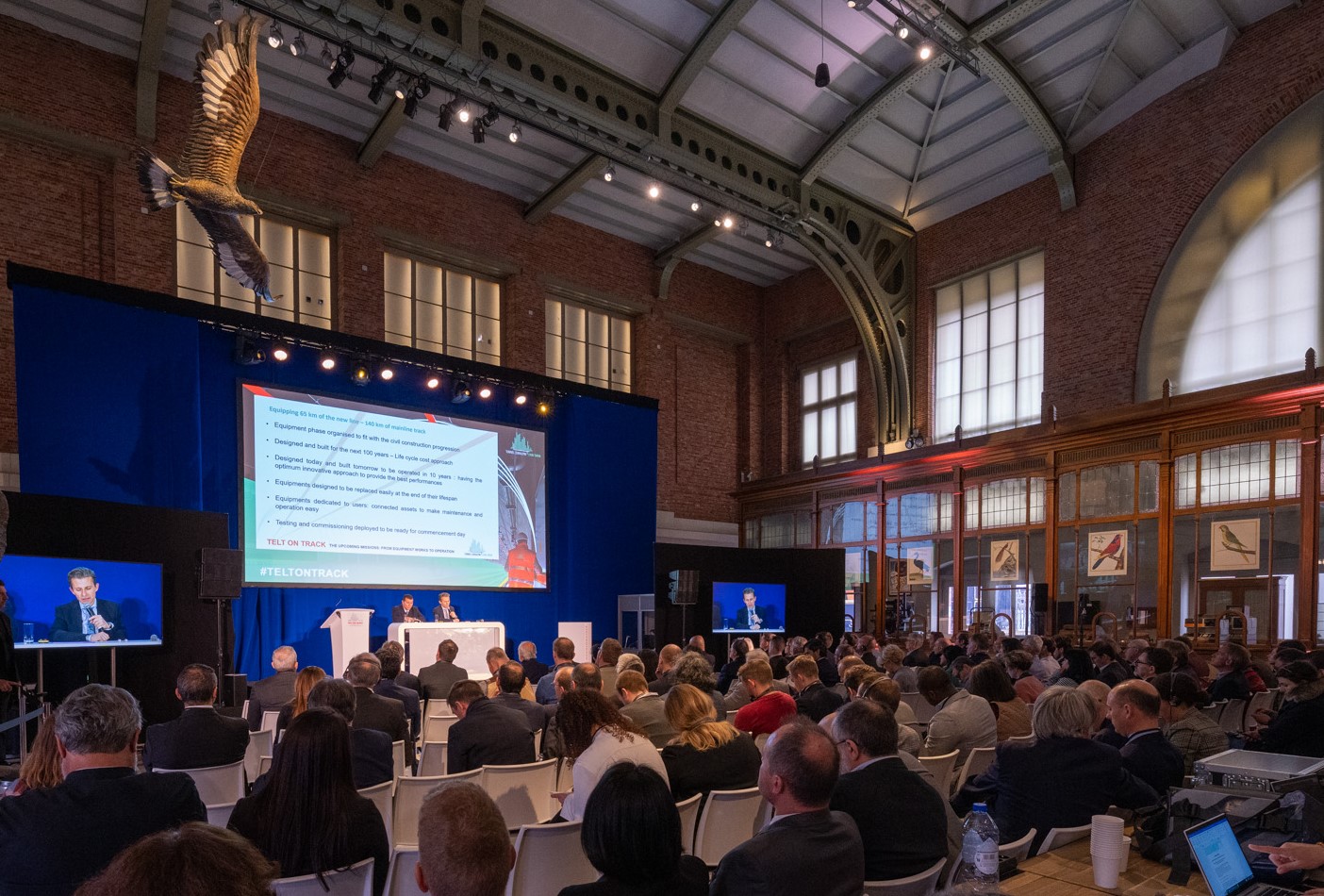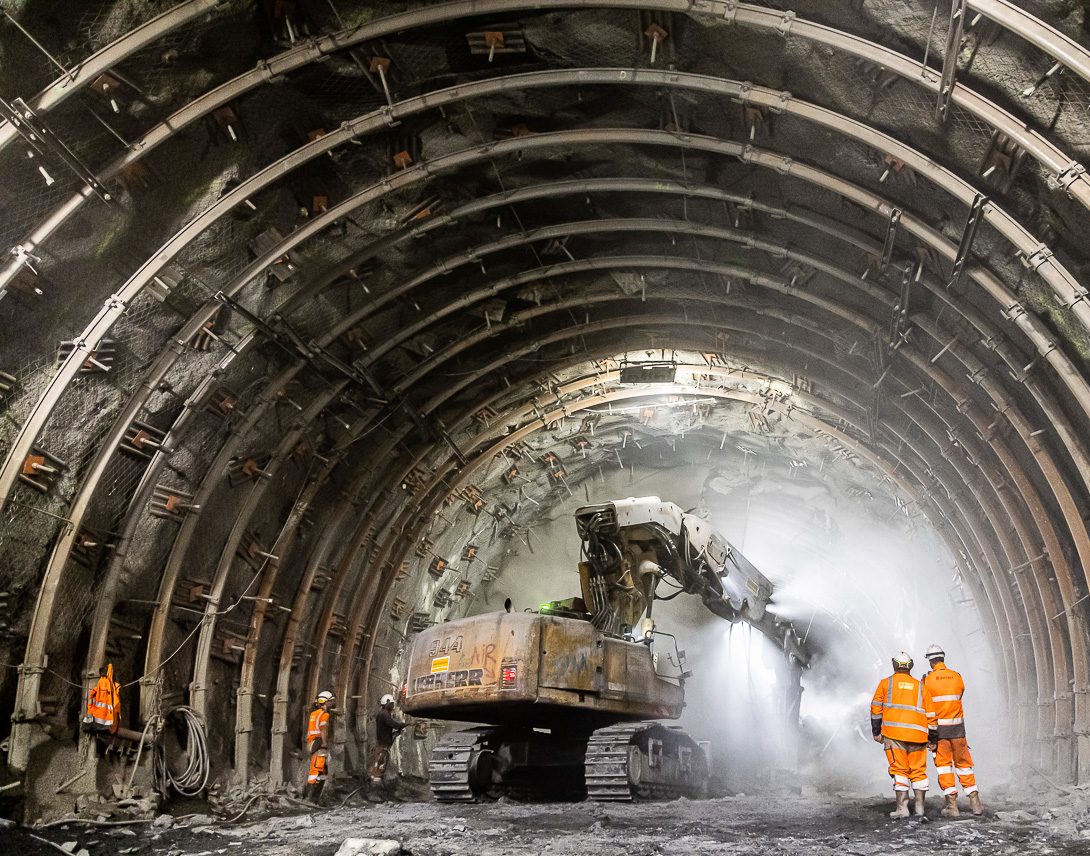New tenders, with an estimated value of €3 billion, are on the way to transform the Mont Cenis base tunnel under construction beneath the Alps between France and Italy into a fully interoperable railway infrastructure.
More than 230 professionals on behalf of 86 international companies were present today at Train World in Brussels in the presentation of the operational missions outlined by public promoter TELT to manage the transition from constructor to operator of the new 65-km-long line between Saint-Jean-de-Maurienne and Susa, including 57.5 km within the world’s longest twin-tube base tunnel.
🔴 #TELTONTRACK | Maurizio Bufalini TELT Technical Division Director: «A few years ago, many of the companies present here today took part in the roadshow for the #LyonTurin base tunnel tenders. Today, a new phase is about to begin: the transition from civil to #railway work» pic.twitter.com/EEAnP5jai2
— TELT Lyon Turin (@telt_lyonturin) April 20, 2023
The morning was closed by the EU Coordinator for the Mediterranean Corridor, Iveta Radičová.
In the afternoon, the companies were able to participate in two thematic workshops to discuss in depth with TELT professionals the technical, administrative and legal aspects of the procedures concerning the international section of the Lyon-Turin line.
The CO12 construction site and TELT next missions
After awarding the contracts for the entire base tunnel in France and, soon, the remaining 20% in Italy, TELT has been working for the last two years to define the functional and technical specific features of the railway and non-railway systems of the new freight and passenger line. There will be 140 km of tracks and catenaries, two control centres at the either end of the infrastructure to manage the tunnel systems and the train traffic 24 hours a day, with more than 900 cameras and sensors installed along the entire route. Three independent electrical substations will allow to guarantee the traction supply for the trains.
Five safety areas, three of which are underground, with reception space and their own external air exchange, can each accommodate up to 1,200 people. Ventilation in the tunnel will be provided by five central ventilation units using the four existing access adits and the four double-flow Avrieux shafts which, in the event of a fire, will enable smoke to be extracted and clean air to be pumped into the safety areas. The project provides for two rescue trains and six (rail-road) bimodal vehicles to deal with any fires or incidents. The underground areas will be equipped with a misting system connected by heat sensitive FibroLaser cables, which will make it possible to detect the exact location of an eventual fire on a train immediately by transmitting the location to the operator in the control room, who can then activate the misting to extinguish the fire directly on the spot. To ensure safety throughout the tunnel, there are 180 bypasses between the two tubes (one every 333 m), 360 evacuation gates and eight fire stations equipped with water tanks capable of functioning more than 10 hours.
TELT has defined three main missions to support the CO12 construction site:
- Technical assistance for the project’s operation, which will provide engineering support for the design and subsequent installation of the railway and non-railway equipment and its connections with the 2 historic lines
- In addition to the equipment TELT is preparing itself for the transition from constructor to operator (for 99 years) thanks to the Shadow operator, a service that will work alongside TELT until the commissioning of the work in several dimensions: the organisation and training of teams, the operational management of traffic, safety, assets and their maintenance, the definition of the route commercial strategies and the management of the 2 international lines and stations
- the maintenance service, which will make it possible to maintain the efficiency and safety of the new infrastructure once it has been put into service, in order to achieve the sustainability objectives underlying the entire Lyon-Turin project, within the framework of the European Green Deal.



